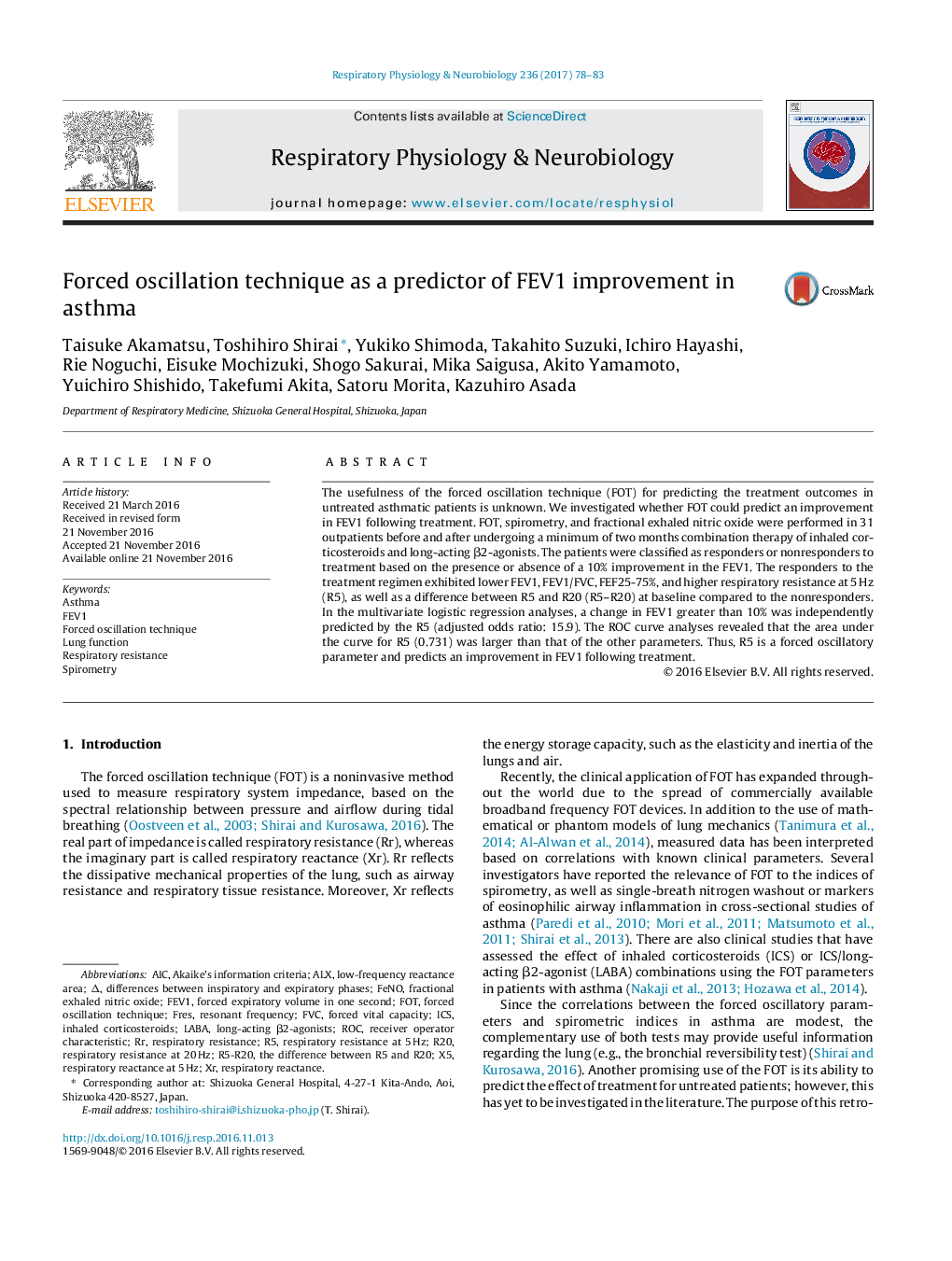| کد مقاله | کد نشریه | سال انتشار | مقاله انگلیسی | نسخه تمام متن |
|---|---|---|---|---|
| 5594189 | 1571294 | 2017 | 6 صفحه PDF | دانلود رایگان |
عنوان انگلیسی مقاله ISI
Forced oscillation technique as a predictor of FEV1 improvement in asthma
دانلود مقاله + سفارش ترجمه
دانلود مقاله ISI انگلیسی
رایگان برای ایرانیان
کلمات کلیدی
ROCrespiratory reactanceR5-R20FOTFresALXR20FeNOICSFEV1AICAkaike’s information criteriaFVCAsthma - آسمLong-acting β2-agonists - آگونیست های بتا -2 طولانی مدتfractional exhaled nitric oxide - اکسید نیتریک اکساسیون منفردForced oscillation technique - تکنیک نوسان سازی اجباریforced expiratory volume in one second - حجم مجاز اجباری در یک ثانیهSpirometry - دَمسنجی یا اسپیرومتریLABA - سودforced vital capacity - ظرفیت حیاتی اجباریLung function - عملکرد ریهresonant frequency - فرکانس رزونانسRespiratory resistance - مقاومت تنفسیreceiver operator characteristic - ویژگی اپراتور گیرندهInhaled corticosteroids - کورتیکواستروئیدهای استنشاقی
موضوعات مرتبط
علوم زیستی و بیوفناوری
بیوشیمی، ژنتیک و زیست شناسی مولکولی
فیزیولوژی
پیش نمایش صفحه اول مقاله

چکیده انگلیسی
The usefulness of the forced oscillation technique (FOT) for predicting the treatment outcomes in untreated asthmatic patients is unknown. We investigated whether FOT could predict an improvement in FEV1 following treatment. FOT, spirometry, and fractional exhaled nitric oxide were performed in 31 outpatients before and after undergoing a minimum of two months combination therapy of inhaled corticosteroids and long-acting β2-agonists. The patients were classified as responders or nonresponders to treatment based on the presence or absence of a 10% improvement in the FEV1. The responders to the treatment regimen exhibited lower FEV1, FEV1/FVC, FEF25-75%, and higher respiratory resistance at 5 Hz (R5), as well as a difference between R5 and R20 (R5-R20) at baseline compared to the nonresponders. In the multivariate logistic regression analyses, a change in FEV1 greater than 10% was independently predicted by the R5 (adjusted odds ratio: 15.9). The ROC curve analyses revealed that the area under the curve for R5 (0.731) was larger than that of the other parameters. Thus, R5 is a forced oscillatory parameter and predicts an improvement in FEV1 following treatment.
ناشر
Database: Elsevier - ScienceDirect (ساینس دایرکت)
Journal: Respiratory Physiology & Neurobiology - Volume 236, February 2017, Pages 78-83
Journal: Respiratory Physiology & Neurobiology - Volume 236, February 2017, Pages 78-83
نویسندگان
Taisuke Akamatsu, Toshihiro Shirai, Yukiko Shimoda, Takahito Suzuki, Ichiro Hayashi, Rie Noguchi, Eisuke Mochizuki, Shogo Sakurai, Mika Saigusa, Akito Yamamoto, Yuichiro Shishido, Takefumi Akita, Satoru Morita, Kazuhiro Asada,